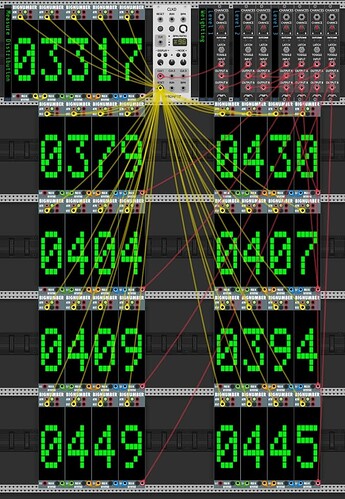Random switch with weighted distribution
Random switch with weighting_Alphagem-O_20240418.vcvs (56.3 KB)
Random switch that allows for weighting the distribution across 8 outputs. Adjust any of the ‘Chance’ knobs to tweak distribution.
The selection contains the switch template plus a setup to test out distribution settings.
The latter can be deleted once the desired settings are found. Run by starting the clock in CLKD and watch numbers develop.

